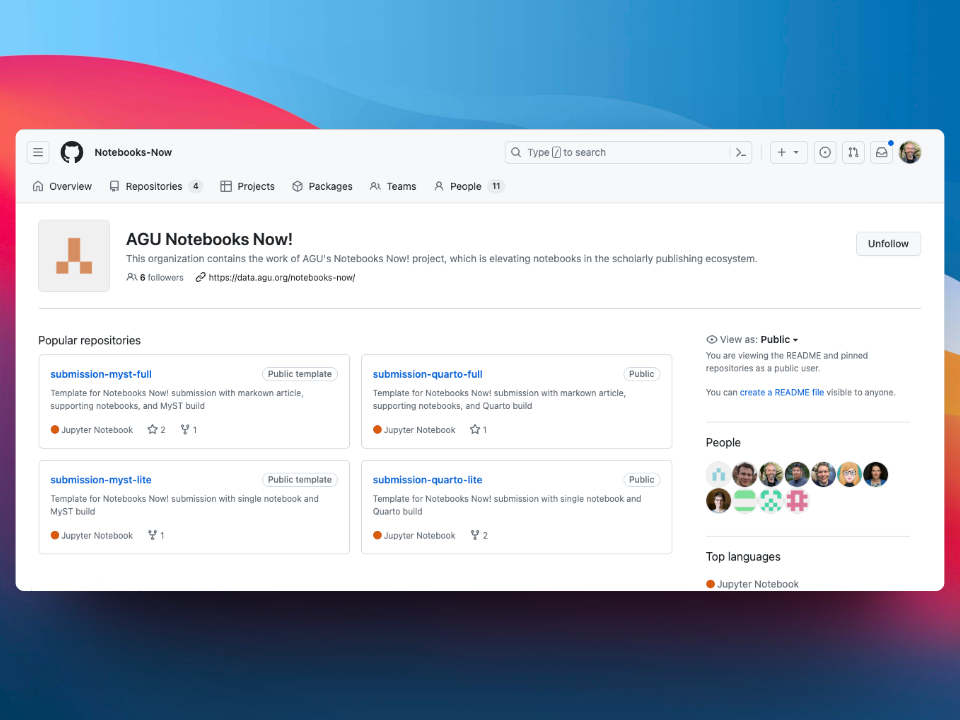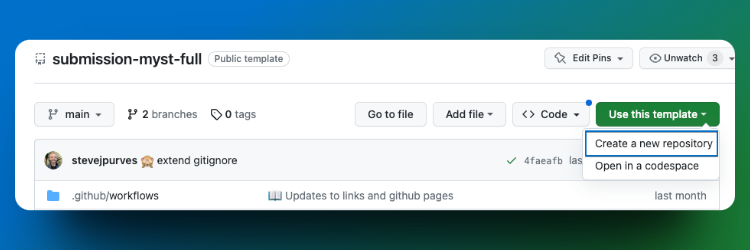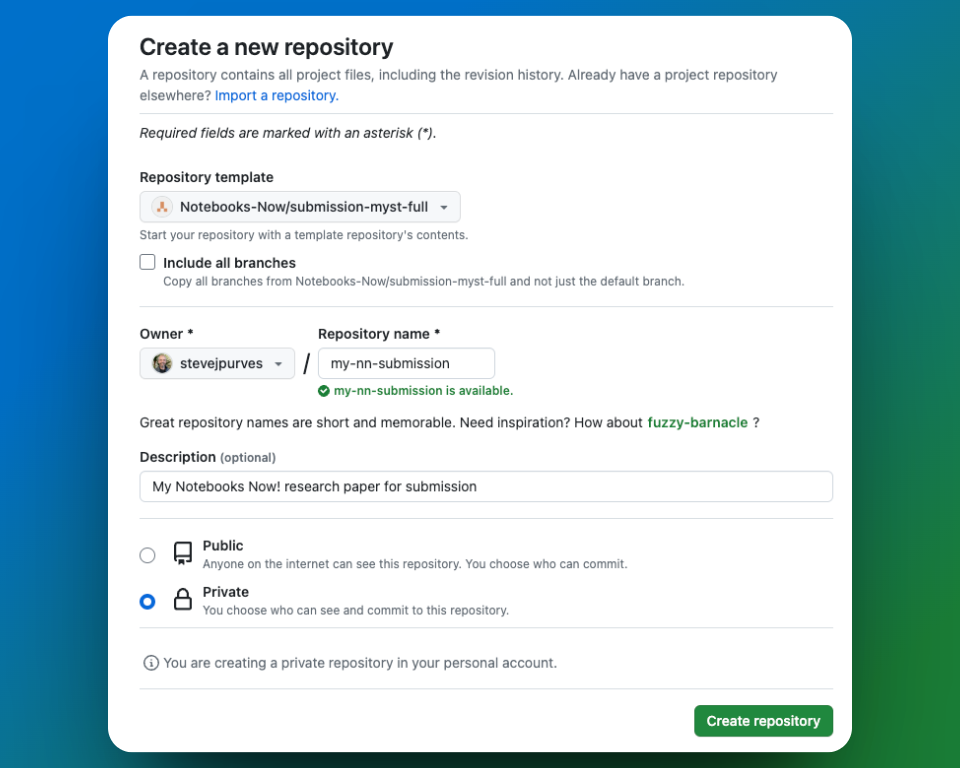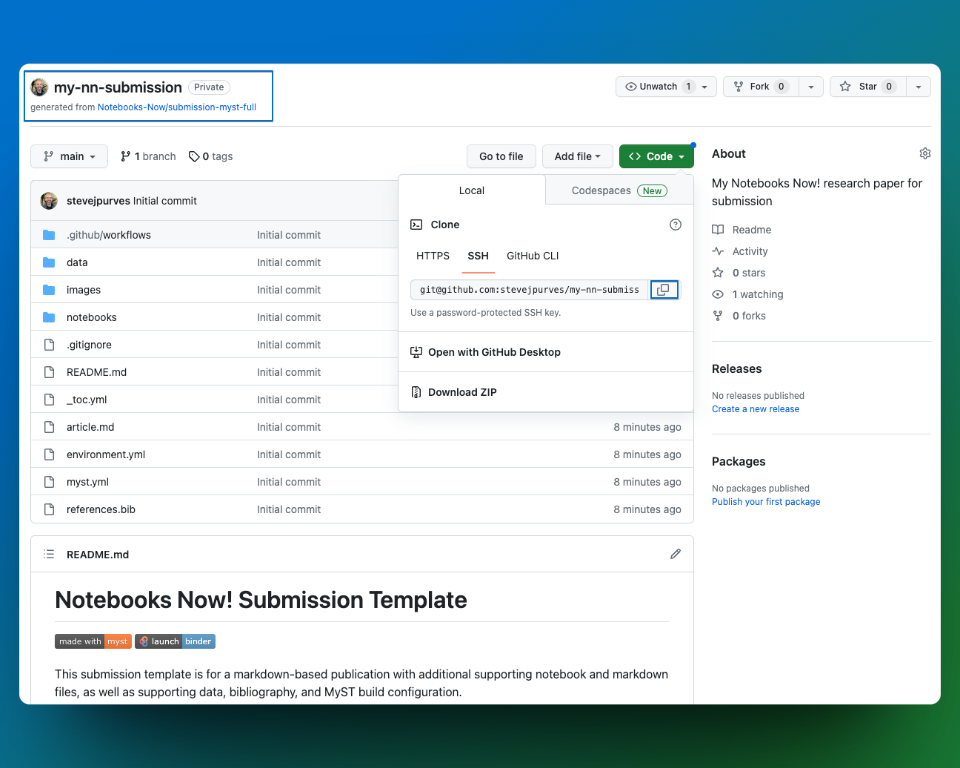Submission templates are available via the Notebooks Now! GitHub Organization (github.com/Notebooks-Now).

🛠 Select one of the full templates corresponding to the authoring tools you wish to use for your submission, either MyST Markdown or Quarto.
🛠 To create your own submission repository on GitHub, click Use This Template and select Create a new repository.

🛠 Enter the details for your new repository.
- Choose a unique name for the repository
- Add a meaningful description
- Mark the repository as public or private. Links to public repositories can be provided directly to the NN submission system, which will clone a copy, while private repositories will be submitted via a
.zipfile. Repositories on GitHub can be made public/private at a later time.

🪄 The new repository is now available in your GitHub account.

🛠 Make a local working copy of your repository.
How you create a local clone of your repository depends on how you are used to working with git. Assuming that you are using the git command line and have ssh configured:
- copy the
sshclone URI from GitHub (as shown above) - Open a terminal or command prompt and navigate to a suitable working folder
- run
git clone git@github.com:username/my-repo.git, replacing thegitURI with your own
Working with git
Add some information on how to get started with git in different ways? command line, windows, codespaces
Next step¶
You have now created your own repository that you can start working in. The repository has example content, configuration files, an example executable environment and GitHub actions that automate preview builds of your content.
Next, learn about the structure of the repository and how you can customize it to fit your submission.